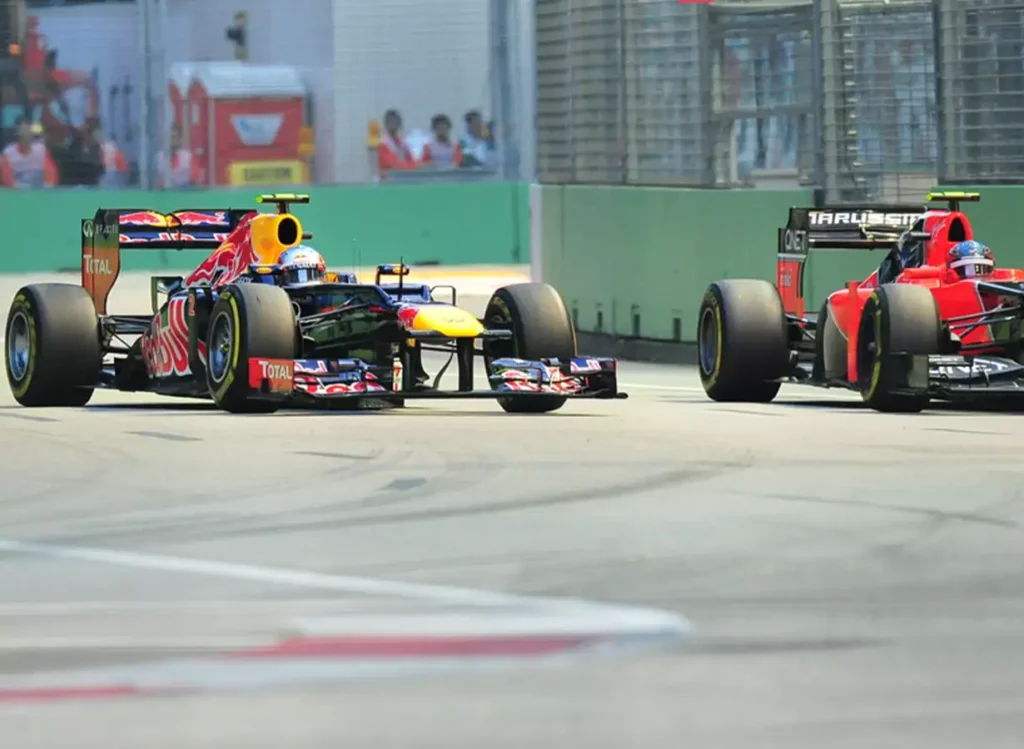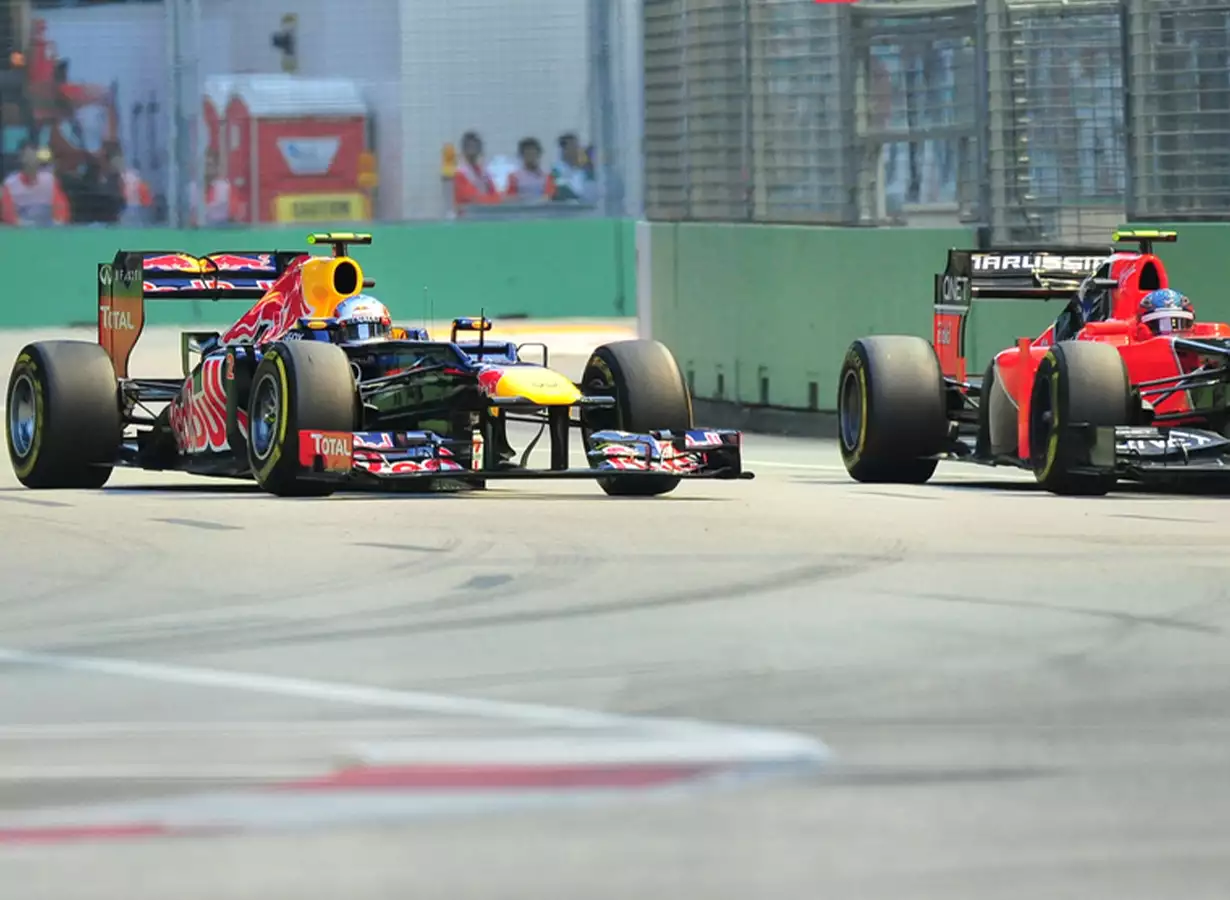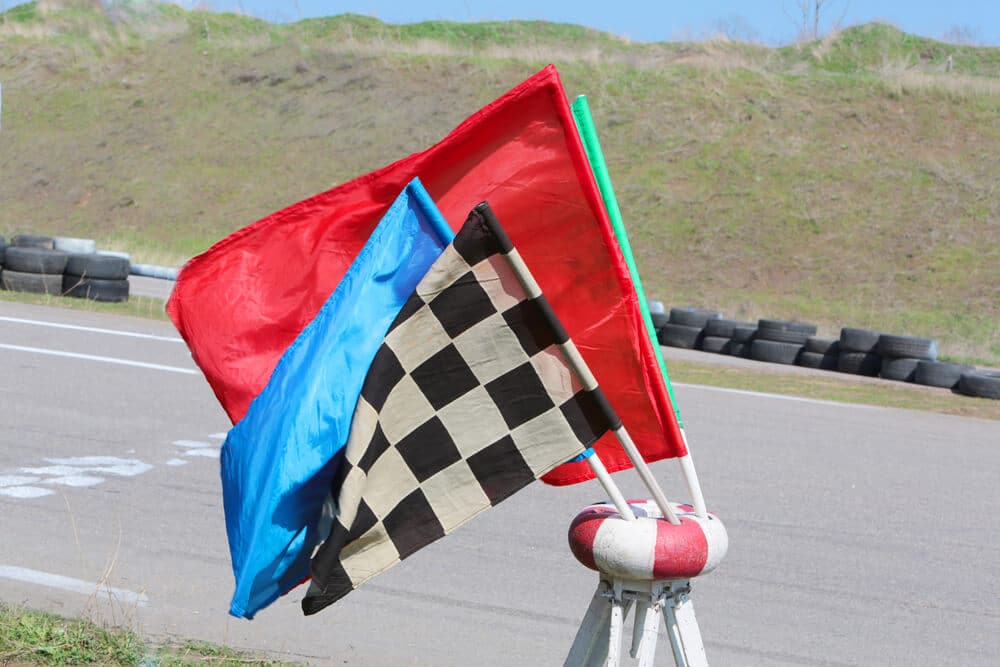What is motor racing without some crazy action and overtaking battles? The race only counts good if it involves wheel-to-wheel activity that brings you to the edge of your seat.
People tend to think that overtaking, i.e. passing a slower-moving car in the same direction, shouldn’t be that hard.
However, overtaking in f1 is not as simple. A whole set of overtaking rules is prescribed, which discusses in detail how the maneuver should be carried out, the rights of attacker and defender positions, and the situations in which it is allowed.
This article aims to serve as a complete guide of f1 overtaking rules and provide valuable insight to the reader regarding the same.
Table of Contents
Watch this video to understand the overtaking rules in Formula One.
Offense when overtaking
An offense in overtaking refers to when the driver positions himself behind the car in front to get past it. There are many ways to go about it depending on the type of corner, fast or slow, the amount of space left by the leading car, and most importantly, the speed of the attacking vehicle.
The driver heading the offense utilizes the slipstream, which significantly assists overtaking. Slipstream usually comes in work down the straights when the car in front produces a lower pressure zone at the back. It allows the car at the rear to overcome less air resistance, ultimately increasing its speed.
The attacking car can also take advantage of DRS, which refers to the Drag Reduction System. It uses the adjustable rear wing of the vehicle to reduce aerodynamic drag and promote overtaking.
The attacking car can also take advantage of DRS, which refers to the Drag Reduction System. It uses the adjustable rear wing of the vehicle to reduce aerodynamic drag and promote overtaking. However, the driver can only put DRS into action near a DRS Detection point and when the two cars are 1 second apart from each other.
Overtaking on the outside of a corner
Overtaking along the outside corners is more complex than passing a car down the straight. The overtaker needs to hold some advantage in terms of speed or grip to carry out this move.
For the attacking automobile to be allowed any room to maneuver, it must be side by side or cover a notable portion of the car to be passed. The new f1 rules state that the front car has to leave enough space to avoid a collision.
Moreover, the attacking driver must carefully complete the offense without forcing the leading driver off track limits. Pushing the driver off track is an unfair move that is usually awarded a time penalty after weighing all the factors.
What is the apex?
An f1 race course is full of twists and turns along which the driver is supposed to maintain a perfect racing line. An apex can be described as the inside edge of a corner that the driver is closest to when taking the straightest race line.
Hitting the apex allows the driver to exit the turn in the fastest possible way. In some instances, the driver may decide to hit a ‘late apex’ which is a point further than the usual apex of a corner. Or, they might also hit an ‘early apex’, which is often a mistake.
Overtaking on the inside of a corner
When the attacking car enters the corner wide and follows the inside race line, it possesses an advantage for overtaking the outside car.
The way it happens is the attacking driver manages to insert his vehicle between the front car and the edge of the corner where the turn is. It ultimately forces the car under attack to leave space for the overtaker and take the longer route for itself, thus compromising its apex speed and losing position.
In the inside corner overtake, the defending car cannot do much to save its position. Therefore, it is the most common method of overtaking around a corner.
However, before going on the move, the driver must ensure that his car’s front wheels are ahead of the front car’s rear wheels. Only if these conditions are fulfilled can this move be judged as a fair one.

Photo showing a correct overtaking in Formula 1.
Defense when overtaking
In Formula One, the car under attack can defend its position from being overtaken, but it must adhere to some rules while doing so.
Drivers can fully use the track, especially when a defense is on the line. But there are some exceptions, such as when the attacking car is nearby, and the driver might not get sufficient time to react to a sudden change in direction.
Most often, the defending driver changes his racing line and goes off route to push the attacker and stop him from gaining an advantage. However, he can only carry out this move once as more than one change of direction is penalized.
The driver must also leave one car width’s space between his car and the edge of the track when re-entering the racing line after defending his position.
The driver must also leave one car width’s space between his car and the edge of the track when re-entering the racing line after defending his position.
Michael Schumacher was questioned for his defense against Lewis Hamilton at Monza in 2011, after which this rule had to be further clarified.
Weaving and driving zig-zag to block overtakes
F1 drivers are allowed to weave, which refers to driving in a zig-zag formation, for reasons such as heating the tires and brakes to achieve the right temperature. It is usually done during the formation lap before the race starts.
Swerving down the straights, however, in an attempt to block an overtaking maneuver is strictly prohibited.
If a driver suddenly starts to drive in a zig-zag line before a braking zone, he will put the driver immediately behind and all the others at the risk of collision. F1 drivers face a time or drive-through penalty for weaving while defending.
In the 2010 Malaysia Grand Prix, when Lewis Hamilton was only given a black and white warning flag for weaving on the straights in front of Vitaly Petrov, all the drivers requested a formal clarification of the weaving rule from the FIA race director, Charlie Whiting.
In the 2010 Malaysia Grand Prix, when Lewis Hamilton was only given a black and white warning flag for weaving on the straights in front of Vitaly Petrov, all the drivers requested a formal clarification of the weaving rule from the FIA race director, Charlie Whiting.
5 overtaking rules you need to know about
Here are five overtaking rules that you need to know about:
1. The one move rule
When approached by an attacking car, a driver can make a defensive move. But this move can be made only once, as otherwise, it is categorized as weaving which is strictly prohibited.
2. Racing alongside another car
This rule comes into play when two cars race side by side on the straight section of the track. When in this situation, none of the two drivers can initiate an overtaking move on the other and should, instead, respect each other’s positions.
3. Entering the braking zone
The braking zone is an area right before an approaching corner where the cars are made to slow down. The driver cannot make a sudden defensive move or change his direction when entering a braking zone as it could lead to a crash with the trailing car.
4. Off-track overtake
An off-track overtake takes place when the attacking driver goes off the track limits while overtaking the car. If the driver successfully overtakes in this manner, he has to swap and go back to his original position. He might also face a penalty for violating track limits.
5. Owner of the corner
Although much debated, it is still accepted that whichever car is ahead at the apex owns the corner. The 2021 crash between Lewis and Max Verstappen at Silverstone aroused much controversy surrounding this rule.
Overtaking rules outside ordinary racing
Can a driver overtake another car when a safety car is on the track?
A safety car is deployed on the track to limit the speed of cars to a safe level. While a safety car is in effect, no driver is allowed to overtake another car. Each car is supposed to maintain its position behind the safety car and can only overtake it once it signals to do so.
Can a driver overtake another car when it is a virtual safety car?
A virtual safety car is signaled in essentially the same situations as a traditional safety car. Therefore, the same rules apply during its effect. It means no overtaking is allowed when it is a virtual safety car, and the cars should travel at low speeds.
Can a driver swerve on a straight if no other cars are around?
A driver can swerve during the formation lap and behind the safety car. If no other cars are around, a driver may swerve on a straight, but as it is not a predictable situation, it is best to avoid it.
Conclusion
Overtaking battles are the charms of an f1 race, but they are also the most dangerous. The FIA has continued to shift the sport to serve a safer outlook. It is the reason why f1 drivers these days are required to follow so many rules and protocols.
Overtaking is also a very demanding move. It requires extreme control and precision from both the attacker and defender. If the driver can strategize it swiftly after weighing all the rules, it is sure to be a success.
Article sources
Learn more about Formula One
Want to learn more about F1? Then visit our Formula 1 glossary and dictionary.




